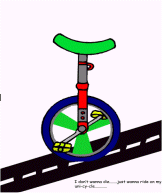Chasing The Tiger Trade: An Introduction

A few weekends
ago, Larry Connors raised a most interesting point
about a trader called Stevie Cohen, who makes lots of money mostly from 5% of
his trades. The rest of the time his account is churning. Win some — lose some.
How many traders experience this churning and what to do about it is the reason
for me writing this column. As a member of Trading Markets, I often go to the
site for information and help. In this case I asked Larry how he dealt with the
issue of churning and in particular, position sizing. (How big does he bet?)
In my own personal account, I experience churning too and I have tried to handle
this issue in many ways. The questions I have asked myself have always come back
to one or more of the five key factors that make up, what I consider to be the
components of a real trading strategy. These are:
-
Finding a personality trading fit and setting personal objectives -
Choosing an appropriate time frame -
Methodology, (concept timing, selection, risk management) -
Position sizing and -
Psychology — developing courage, confidence and discipline.
From my observations and experience in trading, now in my fourteenth year, I
have come to the conclusion that the real money (some say that success comes
from hitting singles, which I also agree with), the big
money is made when large positions are taken on the few very exceptional
opportunities that occasionally present themselves. It has been my
quest therefore to capture these potentially explosive moves. I liken the quest
to “bagging a very elusive metaphorical tiger,†while searching around in the
African jungle, filled with all kinds of obstacles and traps, with the only
means of transport being a unicycle. This means that in order to capture these
“tigers,†I will have to survive in the jungle by being content with smaller
prizes, more often, while waiting for the big opportunities to present
themselves. (P.S. There are no tigers in Africa). Hence, it is important that I
have a strategy that will keep me in the market so that I can hit singles over
and over again while waiting for the big opportunity. In other words, how do I
stay in the market without getting hurt, so that I can be there for the big one,
when it comes?
By the way, I came to trading back in 1987 when a friend showed me that I could
buy long and sell short currencies with small amounts of cash controlling large
positions. The twin concepts of leverage and short selling fascinated me and
since then I was hooked. But it took me many years to discover the basic
procedures to set the rules that would be necessary to keep me in the game and
to meet my objectives. (Leverage is always a double-edged sword.) Let me tell
you that having a leveraged open position in the Thai Baht at 2 a.m. (the spot
currency market trades 24 hrs around the clock) while you are sleeping, can be
very hazardous to your account. So the first Rule I learned was: Stay awake when
trading!
Larry suggested that a good way to explore the issue of creating wealth would be
to pose the question/s in the form of a column to the members and professional
traders at TradinMarkets. In this way, there would be an opportunity to create a
forum in which we could have creative and instructive feedback which would, in
turn, help us all to improve our “churning†ratios. Since position sizing is
such an important component of overall strategy, Larry and I decided that I
should also briefly revisit the other components that I consider necessary to
make up a trading strategy, because a position sizing algorithm cannot be
properly managed out of context of a total strategy. Catching that tiger will
take all the courage, confidence and discipline you can muster, and that is why
it is necessary to revisit your entire strategy.
All the information one needs to trade, and to trade well, is on the site. Many
of the traders who share their experience on the site have disclosed their
methodologies. I recommend that if you are just starting out that you find your
fit, pick your own style and only follow the mentors who match your personality.
Because there is so much information at TradingMarkets.com, in fact something
for everyone, you can easily get caught in different styles of trading and
become overwhelmed with too much information. There are many roads to the top of
the mountain. You only need one.
As a matter of research, I began to understand that making real money in the
world of trading, was not just a question of a successful trading methodology
(finding the edge), nor was it simply a matter of correct “selection†(where to
exploit the edge), which of course is also very important. But if we really
apply our minds to the question of how much to trade we will see that position
sizing (alias money management), is at the crux of the matter. If we want to win
big, we have to play big. And to play big normally means putting too many eggs
into one basket, which we have all been told is absolutely anathema to risk
control. Diversify, diversify and diversify are the three most important rules
of trading, whether in different markets, stocks or strategies. Or so we have
been led to believe.
Yet, if we follow eminent figures in the investing and trading business such as
Warren Buffet, I am sure we can all agree that he cannot be accused of taking
small positions in a stock. Just check out his interest in Coca-Cola. Or if you
challenge that he is a long term investor, then try George Soros. I was trading
in the currency market at the time, when he borrowed billions of dollars to bet
against the Bank of England by shorting the pound. It paid handsomely for him,
since in one day he made something like $800 million; a large bet with a large
reward. Could it have gone the other way? Absolutely, and it did when he bet
against the Japanese yen, and lost. But the truth remains that if we don’t want
to be one of the members of the great “un-rich†crowd, we will have to seriously
consider position sizing as part of our strategy.
I have considered this aspect of the trade and I would like to quote two other
people who have written about money management, as follows; Van Tharp, in his
book “Trade your Way to Financial Freedom†says: “Position sizing is the key
topic behind any Holy Grail system. It’s the difference between the ho-hum
trading methodology and the world’s best methodologies”. Also note that Ryan
Jones in his book “The Trading Game” says “If traders plan on making serious
money in the markets, it will boil down to one thing: how they manage their
money. Outside of sheer luck, no one will make a tremendous amount of
money…without a proper money management strategy.”
From next week I will address the process of putting together my overall trading
strategy with the intent that by sharing my methodology, others on the site will
share theirs and we will all benefit as a result. There is an old saying that
goes like this….In seeking Wisdom, the first stage is silence, the second
listening, the third remembrance, the fourth practicing, the fifth sharing.
As I said, I used
five
components develop my strategy. This five-part trading strategy brings it all
together for me. To catch a tiger you will need stable transport out there in
the jungle, so I picked the only I could find that would teach me about
“balance.†Somehow if I could learn to balance all the parts, then tiger hunting
will be a breeze. Once I have mastered my unicycle, no Tiger will escape me. So
it’s time, to put power to the pedals.
My Unicycle: I’m off to catch the tiger!

Instructions:
-
Saddle: Make sure it “fits†well and be sure the cycle is big enough for
the job or “How much capital do I have� -
Three-Spoke Wheel: (Style of Trading) A. Setup B.Selection and C.Risk
Control! -
Hub: Trading beliefs or concept as the reason for my strategy! -
Pedals: effort or “size†of trade in the market? (No pedal — no travel) -
Road…..to the jungle of opportunity!
Riding a unicycle….Nothing to hold on to, no handle bars for support, just
pedal like hell to go nowhere, or go round in little circles and then fall
off!
Sounds a lot like trading doesn’t it?
So in essence I am taking the opportunity offered to me by Larry, to present a
situation as a trader to other traders who share the quest of gaining wealth
from the markets. I have posed the challenge in the form of a structured
strategy. Since trading success depends in part on a mixture of head, heart and
gut instinct, in some ratio to one other, though structure is very important, I
really do believe the steps outlined above must be taken. Preparation, in my
mind, is the first key to success.
Part 1 — Setting Objectives (If I don’t know where I’m going, any road will take
me there. — Apologies to Alice in Wonderland.)
Part
2 – Choosing Your Time Frame
Part
3 – Why Time Frame Controls Everything
Selwyn Gishen is a
private trader who has been a member of TradingMarkets since its inception. Before switching to equities in 1996, he traded foreign currencies and
South African bonds. He lives in Boca Raton, Fla.
